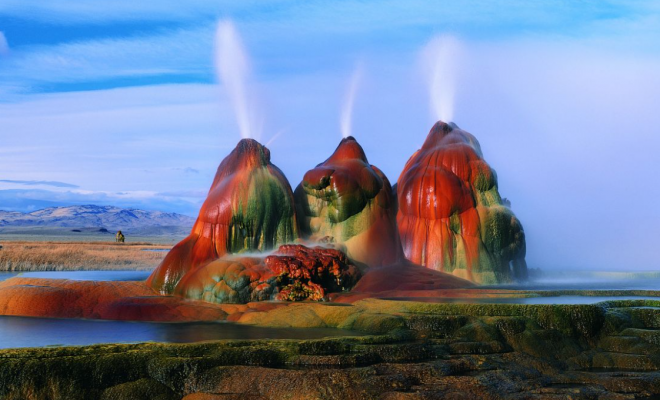
List
10 Amazing Earth Locations That Look Like They’re from Another Planet

Earth is home to extraordinary and bizarre locations that resemble scenes from distant planets. While our dreams of exploring outer space continue to evolve, we can still embark on remarkable journeys right here on our own planet. As NASA prepares for upcoming missions to the moon and Mars, we can take solace in the fact that Earth offers a multitude of breathtaking destinations that will transport us to otherworldly realms. Whether it’s standing on the edge of towering rock formations or wandering through surreal landscapes, these awe-inspiring places are accessible to us with a simple passport and a plane ticket, no spacecraft required.
1. FLY GEYSER, NEVADA, U.S.
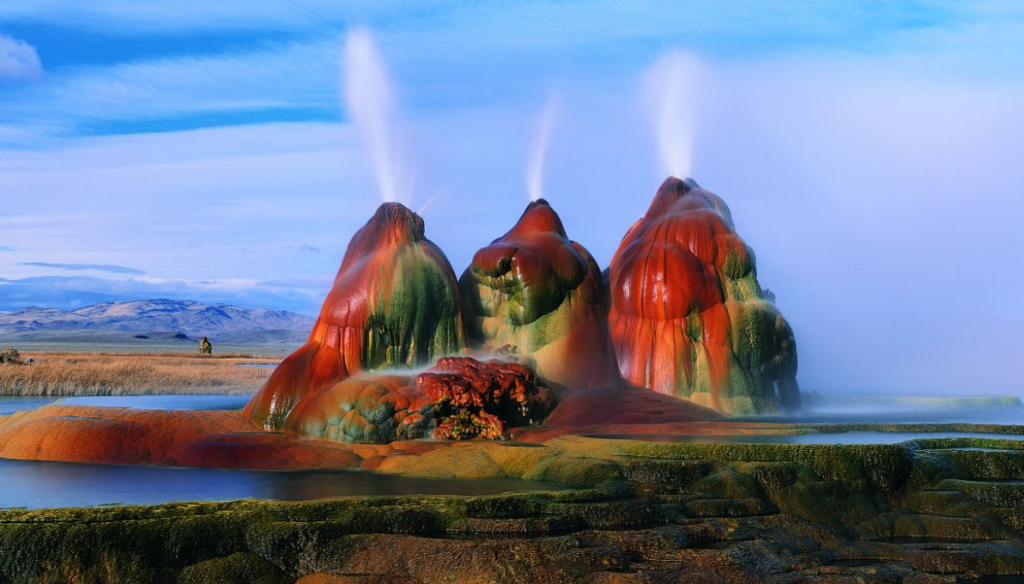
A fascinating sight arises when human error meets geothermal pressure: a towering, alien-like structure standing at 12 feet (3.5 meters) in the Nevada desert. Fly Geyser on Fly Ranch captivates with vibrant colors and spouts of hot water, creating shallow pools that house resilient thermophilic algae. This accidental wonder occurred in 1964 when a geothermal energy company drilled for hot water but found it unsuitable. Improper sealing led to the eruption of scalding water through the surface, forming the mesmerizing three-mound geyser we marvel at today.
2. HAN SON DOONG, VIETNAM
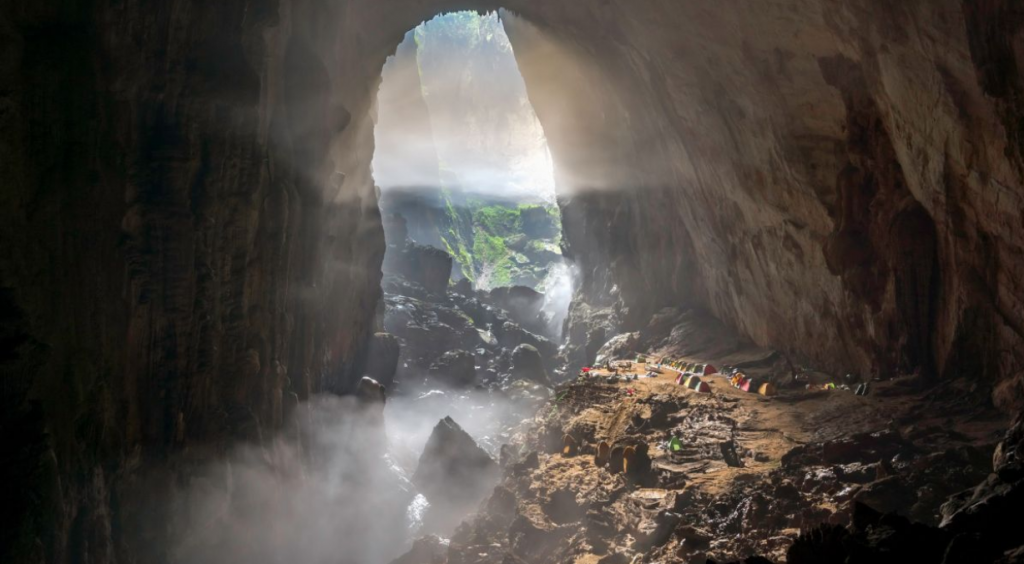
Han Son Doong in Vietnam’s Phong Nha-Ke Bang National Park is Earth’s largest cave, with average passages of 220 feet (67 m), towering heights of 656 feet (200 m), and widths of almost 500 feet (150 m). In 2019, the cave’s known dimensions expanded with the discovery of an underwater tunnel connecting it to another cave. Han Son Doong’s magnificence is boundless, able to house a block of New York City with 40-story skyscrapers, and it boasts the world’s tallest stalagmites, up to 260 feet (80 m) high.
3. KAWAH IJEN VOLCANO, EAST JAVA, INDONESIA
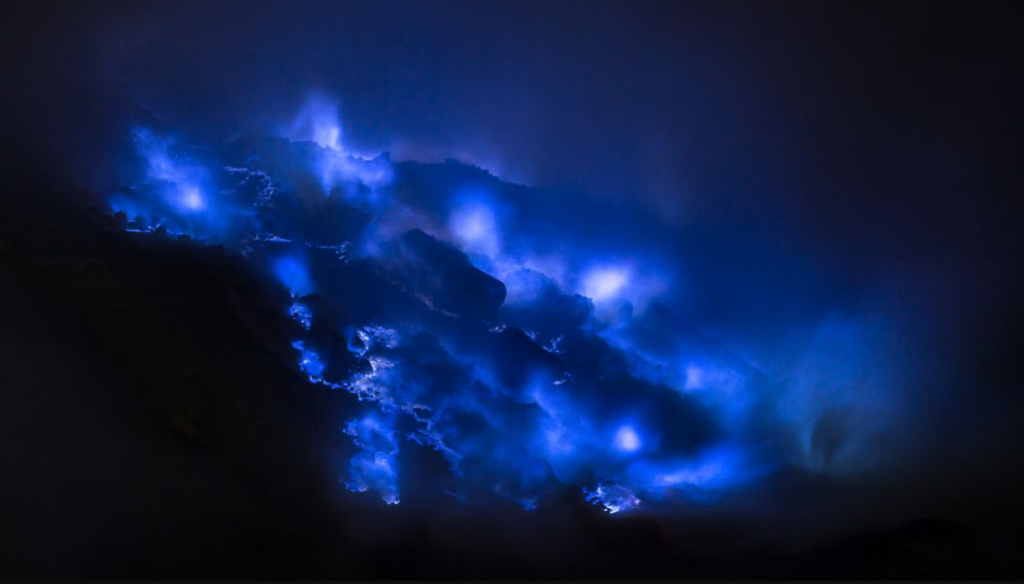
The electric-blue rivers flowing from Kawah Ijen volcano in eastern Java create a surreal spectacle. Contrary to popular belief, the vibrant blue color is not caused by the lava itself but by volcanic sulfur emissions. When these gases react with Earth’s oxygen-rich atmosphere, they ignite, producing a captivating blue flame. As the sulfurous gas condenses, it forms the famous blue rivers illuminating the volcanic landscape at night. Only after dark can the eerie blue glow be seen, as it’s the flames, not the lava, that create this mesmerizing hue, according to Smithsonian Magazine.
4. RAINBOW MOUNTAIN, PERU
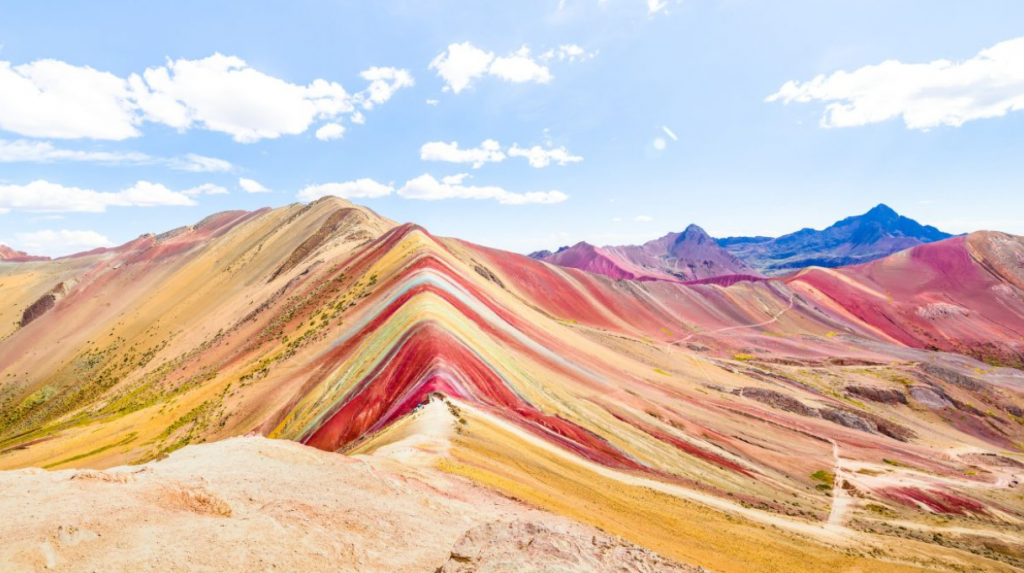
Rainbow Mountain, situated in the Andes Mountains of Peru at an altitude of approximately 17,000 feet (5,200 m) above sea level, showcases its stunning and multicolored beauty. The mountain’s vibrant appearance results from diverse mineral sediments present in its formations, as described by the Rainbow Mountain tourism website. Previously concealed under layers of snow, this hidden gem emerged when the snow melted, captivating the attention of numerous visitors flocking to the area each day. Additionally known as Vinicunca in Quechua, an indigenous language of Peru, the name translates to “colored mountain,” as stated on the official tourism website for Rainbow Mountain Peru.
5. PAMUKKALE, TURKEY
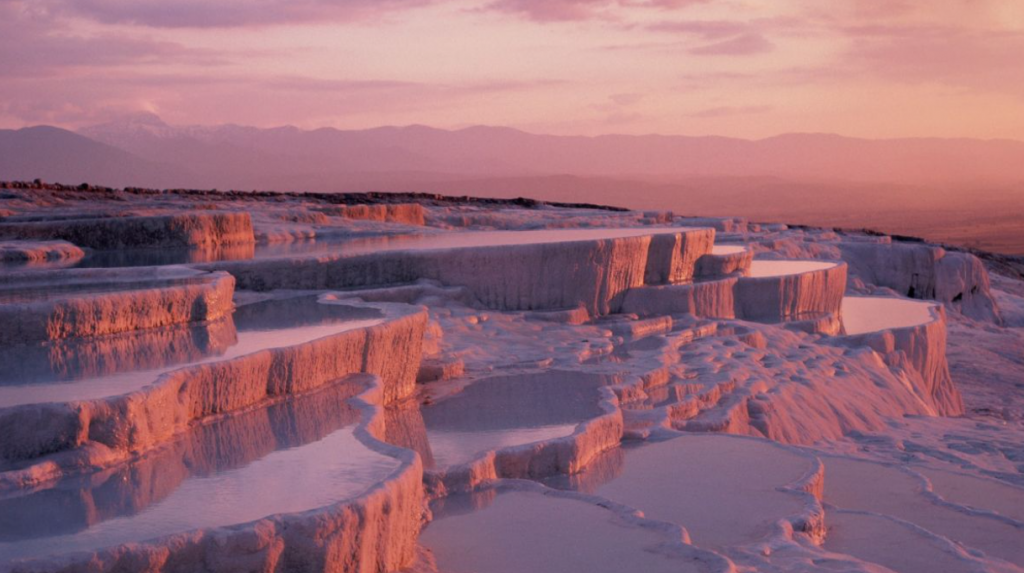
Pamukkale, dubbed the “Cotton Castle” of Turkey, showcases mineral pools on white shelves and ridges. Formed by a calcium bicarbonate-rich spring overflow from a cliff, the cascading water created the stunning white calcium deposits that grace the landscape. Pamukkale attracts visitors seeking serenity with its tranquil waters and numerous rejuvenating spas.
6. KILAUEA VOLCANO, HAWAII

Located on the south coast of the Big Island of Hawaii, the Kilauea volcano unleashes its fiery fury, spewing lava into the Pacific Ocean and creating awe-inspiring vistas along the rugged shoreline. Considered one of the world’s most active volcanoes, Kilauea resides within the Hawaii Volcanoes National Park, approximately 45 miles (72 km) southwest of the lively town of Hilo. Since 1983, Kilauea has been in a continuous eruption, with its lava flows covering over 38 square miles (100 square km) and claiming nearly 200 homes, as the volcano tourism website Volcano Discovery reports.
7. DANAKIL DEPRESSION, ETHIOPIA
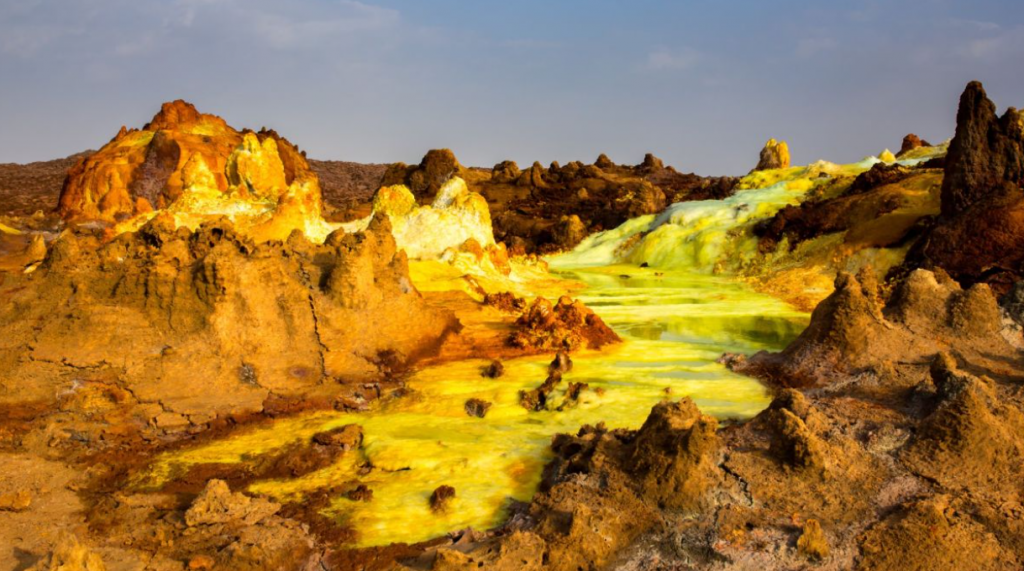
The Danakil Depression in Ethiopia is an extreme and otherworldly location, often called the “gateway to hell.” It resembles Venus’s surface without the oppressive atmosphere, with suffocating sulphuric acid and chlorine gases. The landscape features acid ponds and geysers, with scorching temperatures reaching 113 degrees Fahrenheit (45 degrees Celsius). Situated over 330 feet (100 m) below sea level in a rift valley formed by tectonic plate separation, this dynamic volcanic area shapes the terrain. It is visible from space, according to NASA Earth Observatory.
8. LENÇÓIS MARANHENSES NATIONAL PARK, BRAZIL
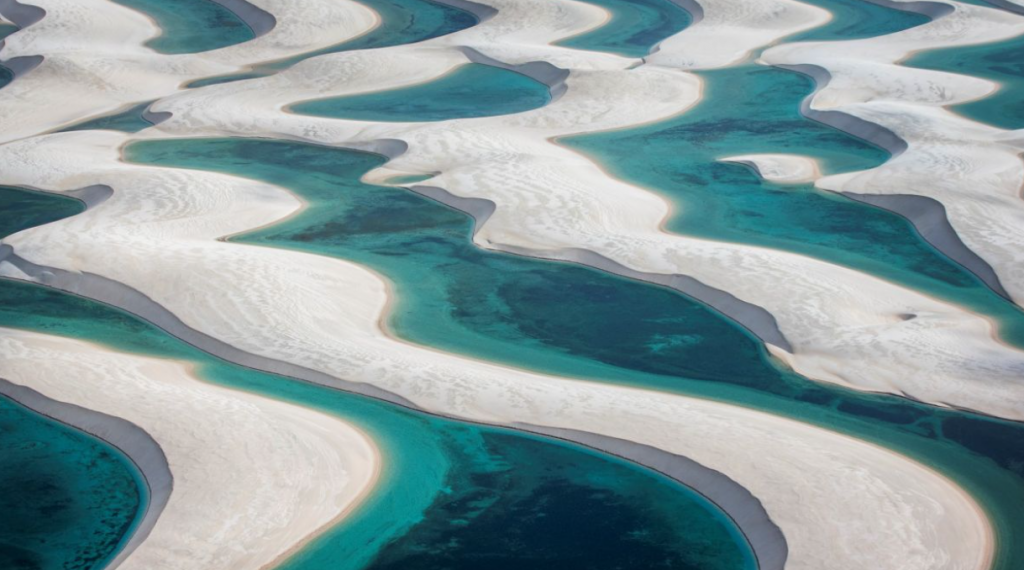
Lençois Maranhenses National Park in Brazil unveils a mesmerizing sight with its expansive white dunes that stretch across the surreal terrain. As described by Lonely Planet, during the months of May to September, these unique dunes are adorned with crystal-clear pools formed by rainwater. Extending over 43 miles (70 km) along the coast and 30 miles (50 km) inland, the park gets its name from the Portuguese word “Lençois,” meaning “bedsheets,” depicting the rolling white dunes that dominate the landscape. To witness the park’s splendor at its peak, it is recommended to visit during June, July, and August when the lagoons are at their finest.
9. LAKE HILLIER, AUSTRALIA

Lake Hillier, on Middle Island in Western Australia, is an otherworldly spectacle with its vivid pink hue contrasting against the deep blue waters of the Indian Ocean and lush green forests. Scientists believe that the presence of Dunaliella salina microalgae-producing red pigments, halophilic bacteria, and potential salt reactions contribute to the lake’s distinctive color. This enigmatic salmon-pink lake is best admired from above, spanning about 2000 feet (600 m) in length and 820 feet (250 m) in width.
10. GRAND PRISMATIC SPRING, YELLOWSTONE NATIONAL PARK

The Grand Prismatic Spring in Yellowstone National Park is renowned as the most photographed thermal feature, attracting adventurers and photographers alike, as noted by Outside. With a diameter of 200 to 300 feet (60 to 90 meters) and a depth of 121 feet (36 m), this captivating spring showcases a vibrant ring of colors. It provides a habitat for thermophiles, microscopic organisms that thrive in hot environments, with colorless or yellow thermophiles in the hottest waters and orange, brown, and green thermophiles in the cooler waters at the spring’s edges, according to the U.S. National Park Service.





0 comments